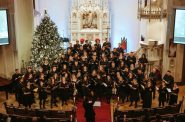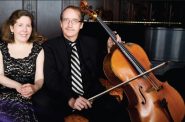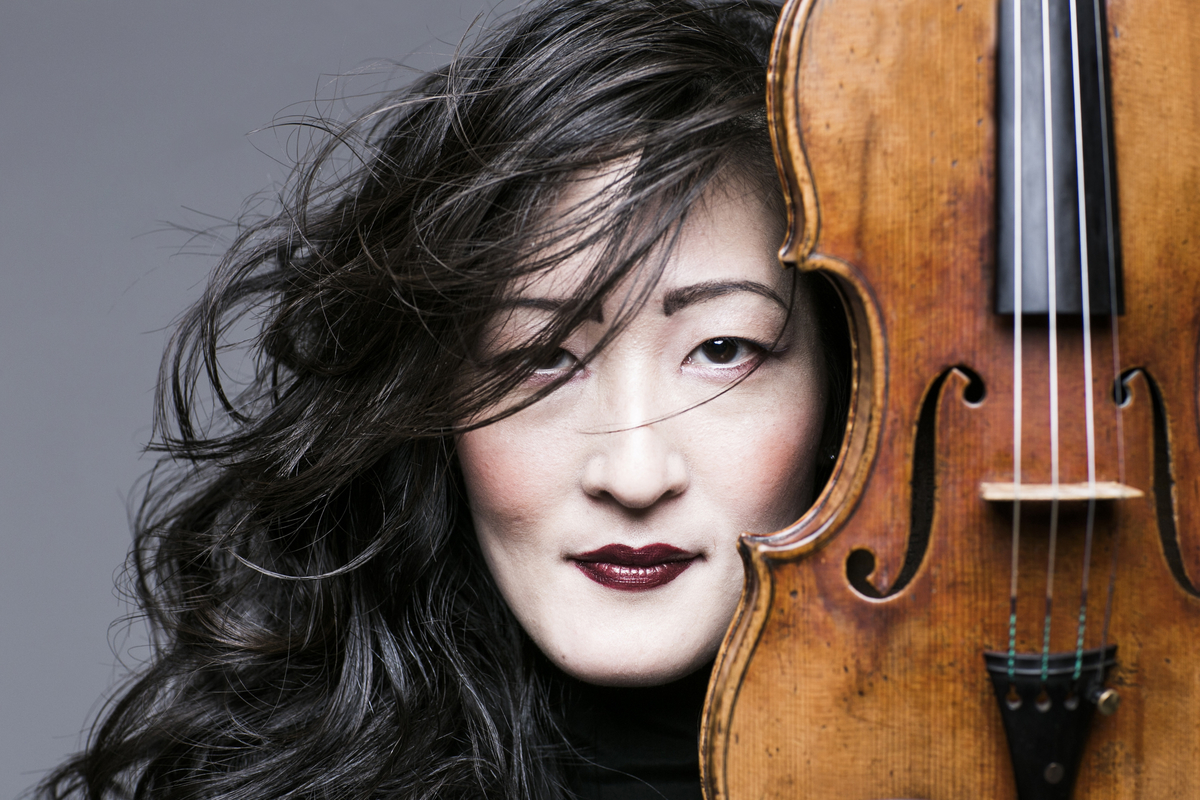Prometheus Trio Opens 25th Season
Works by Haydn, Dvořák, Piazzolla and Tailleferre, the only woman member of Les Six.
The Prometheus Trio opens its 25th season on Monday, September 23 at the Wisconsin Conservatory of Music.
Guest violinist Yuka Kadota will join founding members pianist Stefanie Jacob and cellist Scott Tisdel. A graduate of Indiana University and the Royal College of Music in Stockholm, Sweden, Kadota served as associate concertmaster with the Fort Wayne Philharmonic, and frequently performed with the Chicago Symphony Orchestra before joining the Milwaukee Symphony Orchestra. She was a member of the Freimann Quartet while in Fort Wayne.
Haydn (1732-1809) wrote his Trio in E-flat Major, Hob. XV: 29 near the end of his career while enjoying success in London and Vienna. Jacob observes that the unconventional opening movement “artfully combines song form with variation.” After a heart-breakingly beautiful slow movement, the trio closes with a “rollicking, practically non-stop dance that sets a Haydn finale apart from all others.”
Tailleferre (1892-1983) began her career in early 20th century Paris. At that time the city enjoyed a reputation as the international center for the arts. Visual artists, ballet companies, and composers explored new directions following a century of Romantic Era classical music. Fearlessly independent, Tailleferre was the only woman member of the group of composers that came to be called Les Six, though known more for their individualism than as a school of composition. Tailleferre wrote works for orchestra, solo piano, chamber music, and songs, as well as many film scores.
Tailleferre’s only piano trio, Trio (1916-17), was substantially revised in 1978. Jacob recognizes elements of Fauré, Poulenc, and Stravinsky in the music. Critic Sasha Margolis addresses the question of musical influence and invention:
Indeed, the colors and harmony of the Trio’s first movement, dating from 1916-17, are quite Ravelian, while also drawing frequent comparisons to the music of Chausson; the second movement, written in 1978, evokes the same neoclassical world as Ravel’s Tombeau de Couperin. The whimsical third movement, again dating from 1916-17, calls to mind the harmonies of Ravel’s teacher, Gabriel Fauré, who was director of the Conservatoire during Tailleferre’s student years. This is not to say that Tailleferre’s music is derivative; rather, it is to say that it speaks French, and in the same way that Ravel’s music will sometimes invite comparison with Debussy’s and Fauré’s, so Tailleferre’s recalls other composers, while arranging things very much in its own way.
The concert features an early work by Dvořák’s (1841-1904) Trio in G Minor, Op. 26 known for its melancholic and nostalgic tone, possibly influenced by the death of Dvořák’s infant daughter. Critic Kai Christiansen offers a concise summary of the piece:
Dvořák (opens with) a long narrative that swirls and flickers between dark and light with surprising transformations. Contrasting sections are strongly punctuated by a recurring motto of two fierce chords.
By contrast, the second movement is slow, spacious and singing, a singularly beautiful and tender lullaby that leans towards lament with its passing pathos, mildly eerie atmospheres and its wistfully wandering modulations.
The third movement scherzo gallops resolutely, urgently, with a rhythmic drive whose almost breathless phrases unsettle in their groups of five measures of threes, odd, uneven.
With the finale, Dvořák pulls us out of any lingering despair with humor, curiosity, a touch of manic fugato and a gay swatch of lively dance.
Two tangos close the concert. Piazzolla (1921-1992) represents tango to many of us, primarily for his invention of “Nuevo Tango,” a concert realization of an Argentinian dance incorporating elements from jazz and classical music.
Most everything that Piazzolla wrote featured memorable melodies and evocative rhythms that could be played by almost any combination of instruments. In Piazzolla’s work Oblivion, that versatility is demonstrated in a YouTube presentation of 15 different arrangements of Oblivion, although not ones for full orchestra or piano trio. This link to an arrangement for violin and piano may be closest to the intimate trio presentation programmed by Prometheus. Jacob suggests that “this beautiful piece evokes an evening spent on a balcony overlooking the ocean, ideally with a drink in hand.”
As usual, the Prometheus Trio offers no theme but a collection of interesting works. The evening program takes us from classical Haydn, to a first presentation (for Prometheus) of Tailleferre’s only piano trio, to a masterwork by Dvořák often overshadowed by his other great piano trios, and then closing with treats from Piazzolla.
The concert, Monday, September 23 at 7:00 p.m., will be heard in the acoustically ideal environment of the Helen Bader Recital Hall at the Wisconsin Conservatory of Music, 1584 N. Prospect Ave. Tickets may be purchased online, by phone (414-276-5760), or at the door. Complimentary parking is available at Milwaukee Eye Care, 1684 N Prospect Ave, one block north of the Conservatory.
The Prometheus Trio will perform their second concert on Monday, December 2, featuring works of Beethoven, Gabriela Lena Frank, and Brahms. Guest violinist Emmy Tisdel Lohr makes this concert a family affair.
If you think stories like this are important, become a member of Urban Milwaukee and help support real, independent journalism. Plus you get some cool added benefits.
Preview
-
A Sacred Choir, 70 Voices Strong
 Dec 14th, 2025 by Martha Brown
Dec 14th, 2025 by Martha Brown
-
Prometheus Trio Goes Bohemian
 Dec 3rd, 2025 by Martha Brown
Dec 3rd, 2025 by Martha Brown
-
Present Music Offers New Choral Works
 Nov 20th, 2025 by Michael Barndt
Nov 20th, 2025 by Michael Barndt

















